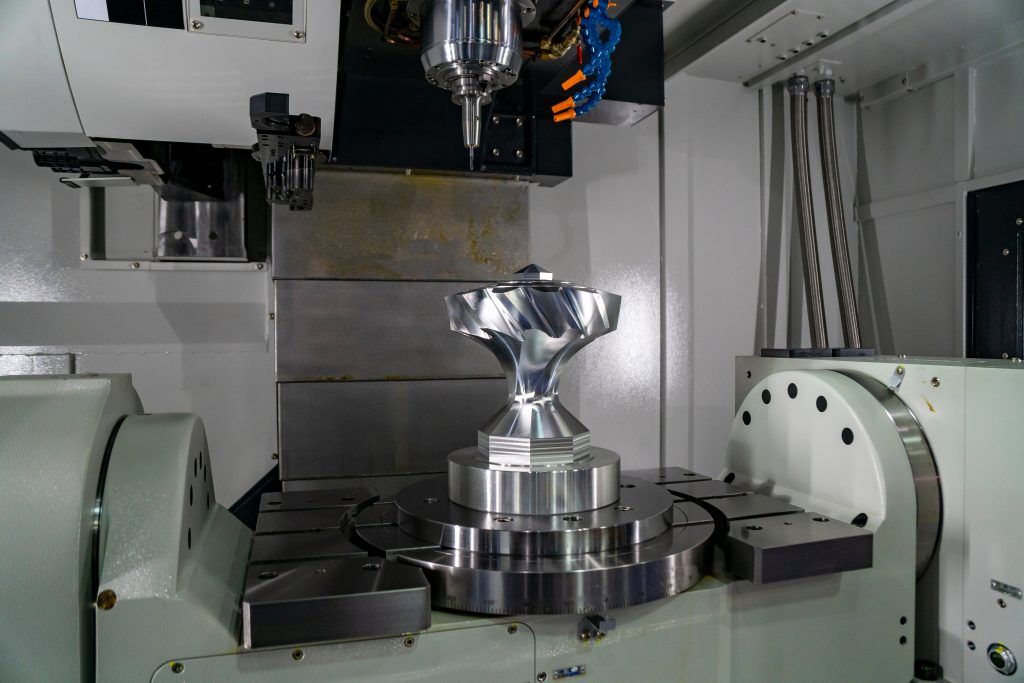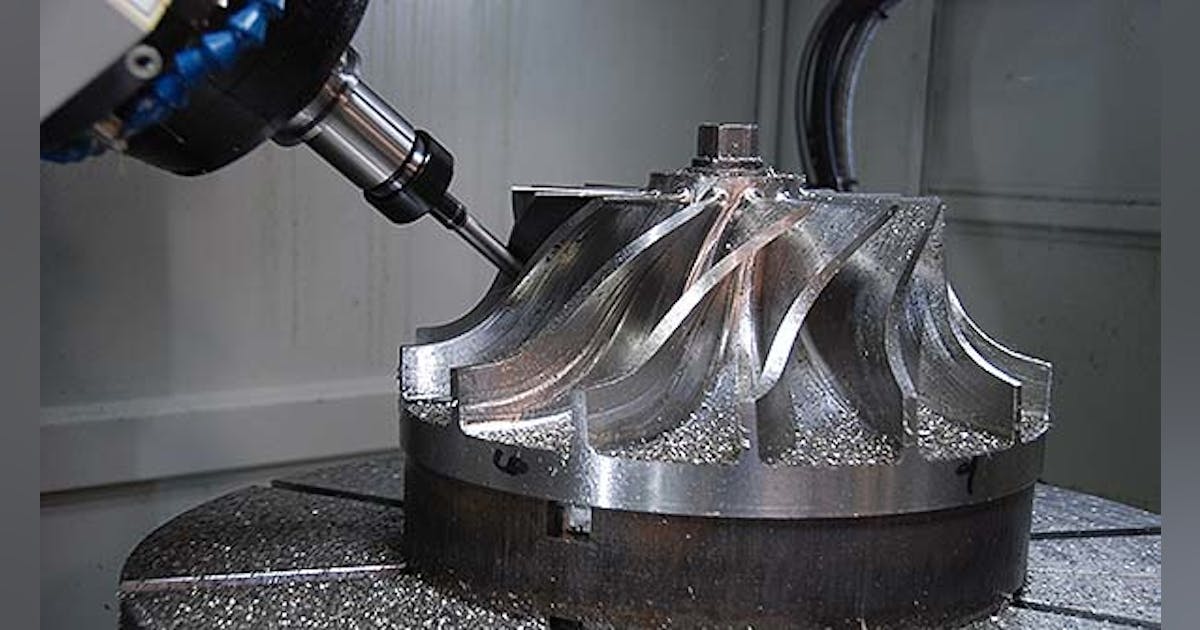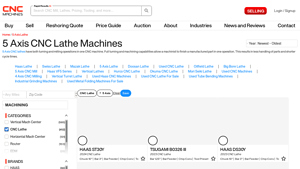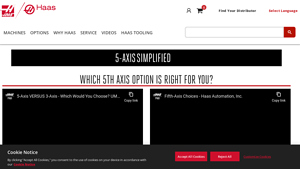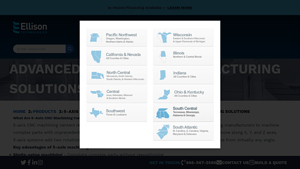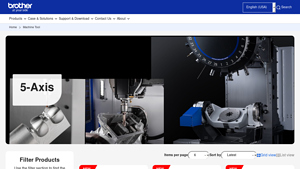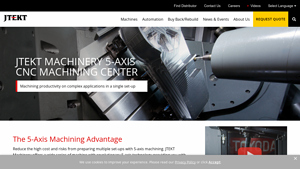5 Axis Cnc Lathe Guide: Type, Cost, Top List…
Introduction: Navigating the Global Market for 5 axis cnc lathe
In today’s competitive manufacturing landscape, sourcing a reliable 5-axis CNC lathe is a critical challenge for international B2B buyers. These advanced machines combine turning and milling capabilities, enabling manufacturers to produce complex parts in a single operation, which reduces cycle times and enhances efficiency. However, navigating the global market to find the right supplier and machine can be daunting, especially for businesses in Africa, South America, the Middle East, and Europe, such as Germany and Brazil.
This guide offers a comprehensive overview of the 5-axis CNC lathe market, addressing essential considerations such as types of machines available, their various applications across industries, and practical advice for vetting suppliers. Additionally, it provides insights into pricing structures and cost-saving strategies that can significantly impact your bottom line. By leveraging the information presented here, B2B buyers will be better equipped to make informed purchasing decisions, ensuring they select the most suitable equipment for their operational needs.
With this guide, you will gain clarity on the complexities of sourcing 5-axis CNC lathes, empowering you to confidently navigate this dynamic market and enhance your manufacturing capabilities.
Understanding 5 axis cnc lathe Types and Variations
| Type Name | Key Distinguishing Features | Primary B2B Applications | Brief Pros & Cons for Buyers |
|---|---|---|---|
| Multi-Spindle Lathe | Features multiple spindles for simultaneous operations. | High-volume production, automotive | Pros: Increases efficiency and throughput. Cons: Higher initial investment and complexity. |
| Swiss-Type Lathe | Utilizes a sliding headstock for precision in small parts. | Medical devices, electronics | Pros: Exceptional precision and minimal waste. Cons: Limited to smaller parts and may require specialized training. |
| Vertical CNC Lathe | Vertical orientation allows for easier loading and unloading. | Aerospace components, heavy machinery | Pros: Better chip removal and enhanced visibility. Cons: Requires more floor space and can be more expensive. |
| Horizontal CNC Lathe | Traditional design with horizontal axis for larger parts. | Oil & gas, large industrial parts | Pros: Suitable for larger workpieces and robust construction. Cons: Less versatile for complex shapes than vertical models. |
| Compact 5-Axis Lathe | Smaller footprint with integrated milling capabilities. | Prototyping, small batch production | Pros: Space-saving and versatile for small shops. Cons: Limited capacity for larger parts. |
What are the Characteristics of Multi-Spindle Lathes?
Multi-spindle lathes are designed for high-efficiency production, capable of machining multiple parts simultaneously. This type is particularly beneficial in industries such as automotive, where large volumes of components are required. When considering a multi-spindle lathe, B2B buyers should evaluate their production needs, the complexity of the parts, and the initial investment, as these machines often come with a higher price tag due to their advanced technology.
How Do Swiss-Type Lathes Enhance Precision?
Swiss-type lathes are known for their ability to produce intricate parts with high precision, making them ideal for industries like medical devices and electronics. The sliding headstock design allows for continuous machining of small components, reducing waste and improving efficiency. Buyers should consider their specific part sizes and precision requirements, as well as the need for specialized training to operate these machines effectively.
What Advantages Do Vertical CNC Lathes Offer?
Vertical CNC lathes provide a unique advantage in chip removal and visibility during the machining process. This orientation is particularly useful for manufacturing aerospace components and heavy machinery parts. B2B buyers should assess the available floor space and their production volume, as vertical lathes may require more space and can be more costly than horizontal models.
When to Choose Horizontal CNC Lathes?
Horizontal CNC lathes are the traditional choice for machining larger workpieces, commonly used in the oil and gas sector. They are robust and suitable for a wide range of applications. Buyers should consider the size of the parts they intend to produce, as well as the potential for more complex shapes that may be better suited to vertical lathes.
Why Opt for Compact 5-Axis Lathes?
Compact 5-axis lathes are ideal for small shops that require versatility without sacrificing too much floor space. They combine both turning and milling operations, making them suitable for prototyping and small batch production. Buyers should weigh the benefits of versatility against the limitations in capacity for larger parts, ensuring that their investment aligns with their production goals.
Key Industrial Applications of 5 axis cnc lathe
| Industry/Sector | Specific Application of 5 axis cnc lathe | Value/Benefit for the Business | Key Sourcing Considerations for this Application |
|---|---|---|---|
| Aerospace | Precision components for aircraft | Enhanced accuracy and reduced production time | Supplier certifications, delivery times, and support |
| Automotive | Complex engine parts manufacturing | Improved part quality and reduced assembly costs | Material compatibility, machine versatility |
| Medical Devices | Custom surgical instruments | High precision and compliance with regulatory standards | ISO certifications, traceability, and customization |
| Oil and Gas | Specialized fittings and connectors | Increased durability and reduced downtime | Material properties, machining capabilities |
| Electronics | Housing for electronic components | Cost-effective production with high repeatability | Technology integration, after-sales support |
How is a 5 Axis CNC Lathe Used in Aerospace Manufacturing?
In the aerospace sector, 5 axis CNC lathes are utilized to manufacture precision components such as turbine blades and structural parts. These machines can perform both turning and milling operations, allowing for the creation of complex geometries in a single setup. This capability significantly reduces handling and assembly time, which is crucial in aerospace manufacturing where precision and efficiency are paramount. International buyers should consider suppliers with proven certifications and robust quality assurance processes to meet the stringent regulations of the industry.
What Role Does a 5 Axis CNC Lathe Play in Automotive Applications?
The automotive industry employs 5 axis CNC lathes for producing intricate engine components, such as camshafts and crankshafts. The ability to machine multiple sides of a part in one operation enhances accuracy and reduces cycle times, leading to improved part quality. For B2B buyers, it’s essential to assess the machine’s material compatibility and the supplier’s ability to provide technical support, especially when working with advanced materials like titanium or high-strength steels.
Why are 5 Axis CNC Lathes Essential for Medical Device Manufacturing?
In the medical device sector, 5 axis CNC lathes are critical for fabricating custom surgical instruments and implants. The precision offered by these machines ensures compliance with strict regulatory standards, which is vital for patient safety. Buyers should prioritize suppliers that can demonstrate ISO certifications and a robust track record in medical manufacturing, along with the ability to customize solutions to fit specific needs.
How Do 5 Axis CNC Lathes Improve Oil and Gas Component Production?
The oil and gas industry relies on 5 axis CNC lathes for producing specialized fittings and connectors that must endure harsh environments. The ability to create complex shapes with high durability reduces the need for frequent replacements and maintenance, thereby minimizing downtime. When sourcing, buyers should focus on the material properties and the machine’s capability to handle large components, as well as the supplier’s expertise in oil and gas applications.
What Advantages Do 5 Axis CNC Lathes Offer in Electronics Manufacturing?
In electronics manufacturing, 5 axis CNC lathes are used to produce housings for various electronic components, ensuring high precision and repeatability. This leads to cost-effective production runs and the ability to quickly adapt to changing market demands. B2B buyers should consider technology integration capabilities and after-sales support when selecting suppliers, as these factors can significantly impact production efficiency and product quality.
3 Common User Pain Points for ‘5 axis cnc lathe’ & Their Solutions
Scenario 1: Overcoming High Initial Investment Costs for 5 Axis CNC Lathes
The Problem: Many B2B buyers are often deterred by the substantial upfront investment required for acquiring a 5-axis CNC lathe. This equipment is typically more expensive than traditional machining solutions due to its advanced capabilities, which can lead to hesitation in purchasing. Buyers may worry about justifying this expense, especially if they are uncertain about achieving a return on investment (ROI) or if they operate in markets with tight margins.
The Solution: To mitigate high initial costs, businesses should conduct a thorough cost-benefit analysis that highlights the long-term savings and efficiency gains from using a 5-axis CNC lathe. Buyers can seek financing options such as leasing or vendor financing that allow for manageable payments over time. Additionally, it’s essential to focus on the machine’s versatility and ability to reduce cycle times and labor costs. Investing in training for operators can also maximize the machine’s capabilities, ensuring that the investment pays off through enhanced productivity and reduced waste. Finally, potential buyers should consider sourcing used or refurbished machines from reputable dealers, which can significantly lower the initial cost without compromising quality.
Scenario 2: Navigating Complexity in Programming and Operation
The Problem: The complexity of programming and operating a 5-axis CNC lathe can be overwhelming for companies new to this technology. Users may struggle with learning how to effectively program intricate parts, leading to increased downtime and mistakes that can be costly. This can be especially challenging for businesses in regions where skilled labor is scarce or for those transitioning from simpler machines.
The Solution: To address these challenges, companies should invest in comprehensive training programs for their staff. Partnering with the manufacturer or a specialized training provider can offer tailored sessions that focus on the specific programming and operational needs of the business. Additionally, utilizing simulation software before actual machining can help operators visualize and understand the machining process, reducing errors and boosting confidence. Establishing a mentorship program where experienced machinists guide newer operators can also facilitate knowledge transfer. Lastly, leveraging online resources and forums can provide ongoing support and troubleshooting advice, helping users become proficient in programming and operating their 5-axis CNC lathes.
Scenario 3: Ensuring Consistent Quality and Precision
The Problem: Quality control is a significant concern for B2B buyers using 5-axis CNC lathes, particularly in industries such as aerospace and automotive, where precision is paramount. Inconsistent part quality can lead to rework, increased scrap rates, and potential damage to customer relationships. This issue is compounded by variations in material properties and the intricacies involved in multi-axis machining.
The Solution: To ensure consistent quality, businesses should implement a robust quality management system that includes regular calibration and maintenance of the CNC lathe. Utilizing advanced probing systems integrated into the lathe can provide real-time feedback on part dimensions, allowing for immediate adjustments to the machining process. Developing a standardized operating procedure (SOP) for setup and operation can help maintain consistency across different operators and shifts. Additionally, investing in advanced materials and tooling designed specifically for the lathe can enhance performance and reduce variability. Regular training on quality standards and inspection techniques will further empower operators to produce high-quality parts reliably, ultimately strengthening the company’s market reputation.
Strategic Material Selection Guide for 5 axis cnc lathe
What Are the Key Materials for 5 Axis CNC Lathes?
When selecting materials for components produced by 5 axis CNC lathes, it is crucial to consider their properties, advantages, disadvantages, and the specific needs of international B2B buyers. Here, we analyze four common materials: aluminum, stainless steel, titanium, and plastics.
Aluminum: A Lightweight and Versatile Option
Aluminum is renowned for its lightweight properties and excellent machinability. It typically has a temperature rating of up to 400°F and offers good corrosion resistance, making it suitable for various applications.
Pros: Aluminum is cost-effective and allows for rapid manufacturing processes due to its ease of machining. It is ideal for producing parts that require a good strength-to-weight ratio, such as automotive components and aerospace parts.
Cons: However, aluminum may not be suitable for high-stress applications due to its lower tensile strength compared to other metals. It can also be more susceptible to wear and deformation under extreme conditions.
Impact on Application: Aluminum is compatible with various media, including air and water, but may not perform well in highly corrosive environments.
Considerations for International Buyers: Buyers from regions like Europe and South America should ensure compliance with standards such as ASTM B221 for aluminum extrusions. Additionally, preferences may lean towards specific aluminum alloys like 6061 or 7075, which are widely recognized for their performance.
Stainless Steel: Strength and Corrosion Resistance
Stainless steel is a robust material known for its exceptional corrosion resistance and durability. It can withstand temperatures up to 1,500°F, making it suitable for high-temperature applications.
Pros: Its strength makes it ideal for producing components in the medical, aerospace, and automotive industries. Stainless steel also has a long lifespan, reducing the need for frequent replacements.
Cons: The primary drawback is its higher cost compared to aluminum and its complexity in machining, which may lead to longer production times and increased tooling wear.
Impact on Application: Stainless steel is compatible with a wide range of media, including chemicals and high-pressure environments, making it a versatile choice for various applications.
Considerations for International Buyers: Compliance with standards such as ASTM A276 and DIN 17440 is essential for buyers in Europe and the Middle East, where quality assurance is critical.
Titanium: High Performance for Specialized Applications
Titanium is known for its high strength-to-weight ratio and excellent corrosion resistance, particularly in harsh environments. It can withstand temperatures exceeding 1,600°F.
Pros: Titanium is ideal for aerospace and medical applications due to its biocompatibility and resistance to extreme conditions. It also offers excellent fatigue resistance.
Cons: The primary limitation is its high cost and the complexity of machining, which requires specialized tools and techniques, potentially leading to longer lead times.
Impact on Application: Titanium’s compatibility with aggressive media, such as seawater and acids, makes it a preferred choice for marine and chemical processing applications.
Considerations for International Buyers: Buyers must consider compliance with ASTM F136 or ASTM B348 standards, particularly in the medical field, where stringent regulations apply.
Plastics: Cost-Effective and Lightweight Solutions
Plastics, such as polycarbonate or nylon, are increasingly used in CNC machining due to their lightweight and versatile properties. They can typically withstand temperatures up to 200°F.
Pros: Plastics are cost-effective and easy to machine, making them suitable for prototyping and low-volume production. They also offer good chemical resistance and electrical insulation.
Cons: However, they may not provide the strength or durability required for heavy-duty applications, and their thermal stability can be a concern in high-temperature environments.
Impact on Application: Plastics are suitable for various applications, including electronic housings and consumer products, but their compatibility with certain chemicals should be evaluated.
Considerations for International Buyers: Buyers should ensure compliance with relevant standards such as ASTM D638 for tensile properties and consider regional preferences for specific plastic grades.
Summary Table of Material Selection for 5 Axis CNC Lathes
| Material | Typical Use Case for 5 axis cnc lathe | Key Advantage | Key Disadvantage/Limitation | Relative Cost (Low/Med/High) |
|---|---|---|---|---|
| Aluminum | Automotive and aerospace components | Lightweight and easy to machine | Lower tensile strength | Low |
| Stainless Steel | Medical and aerospace applications | Excellent corrosion resistance | Higher cost and machining complexity | High |
| Titanium | Aerospace and medical implants | High strength-to-weight ratio | Very high cost and machining difficulty | High |
| Plastics | Electronic housings and prototypes | Cost-effective and versatile | Limited strength and thermal stability | Low |
This strategic material selection guide aims to assist international B2B buyers in making informed decisions regarding the materials used in 5 axis CNC lathes, considering their specific applications and regional compliance requirements.
In-depth Look: Manufacturing Processes and Quality Assurance for 5 axis cnc lathe
What Are the Key Manufacturing Processes for 5 Axis CNC Lathes?
The manufacturing of 5 axis CNC lathes involves several critical stages, each contributing to the precision and efficiency of the final product. Understanding these processes is vital for B2B buyers seeking reliable suppliers.
How Does Material Preparation Influence the Manufacturing Process?
The first stage in manufacturing a 5 axis CNC lathe is material preparation. High-quality raw materials, typically stainless steel or aluminum, are selected based on the specific requirements of the lathe. The materials undergo processes such as cutting, shaping, and surface treatment to ensure they meet the necessary specifications. Advanced suppliers utilize CNC machining for precise cuts and shapes, which is essential for minimizing waste and ensuring uniformity in the final components.
What Are the Main Techniques Used in Forming 5 Axis CNC Lathes?
Once the materials are prepared, the next step is forming. This stage involves various techniques, including:
- Turning: This is a fundamental process where the workpiece is rotated against a cutting tool to remove material, creating the desired shape and dimensions.
- Milling: Integrated into 5 axis lathes, milling allows for complex geometries by enabling multiple axes of movement, which is crucial for intricate designs.
- Drilling and Tapping: These processes add holes and threads to components, enhancing functionality and assembly.
Employing these techniques in a single setup reduces handling time and improves overall efficiency, leading to shorter cycle times.
How Is Assembly Conducted in the Manufacturing of 5 Axis CNC Lathes?
The assembly phase is where the machined components come together. Skilled technicians meticulously assemble the various parts, ensuring that tolerances are adhered to. This stage often involves:
- Alignment and Calibration: Components are aligned with high precision to ensure optimal performance. Calibration of control systems is also performed to ensure the machine operates correctly under specified conditions.
- Integration of Electronics and Software: Modern 5 axis CNC lathes are equipped with sophisticated control systems that require careful integration. This includes programming the machine for specific tasks and ensuring that all electronic components function correctly.
By focusing on precision during assembly, manufacturers can enhance the reliability and longevity of the machines.
What Finishing Techniques Are Essential for Quality 5 Axis CNC Lathes?
The finishing stage involves processes that enhance both the aesthetic and functional aspects of the CNC lathe. Techniques such as grinding, polishing, and coating are commonly employed to achieve a high-quality surface finish. These processes not only improve the machine’s appearance but also protect it from wear and corrosion.
How Is Quality Assurance Implemented in 5 Axis CNC Lathe Manufacturing?
Quality assurance (QA) is a critical aspect of manufacturing 5 axis CNC lathes, ensuring that the machines meet international standards and buyer expectations.
What International Standards Should B2B Buyers Be Aware Of?
B2B buyers should be familiar with various international standards that govern the quality of manufacturing processes. Key standards include:
- ISO 9001: This standard outlines the requirements for a quality management system, ensuring that manufacturers consistently provide products that meet customer and regulatory requirements.
- CE Marking: For machines sold in the European market, CE marking indicates conformity with health, safety, and environmental protection standards.
- API Standards: For buyers in industries like oil and gas, adherence to American Petroleum Institute (API) standards is crucial for ensuring equipment reliability and safety.
Understanding these standards helps buyers assess the credibility of suppliers.
What Are the Key Quality Control Checkpoints in Manufacturing?
Quality control (QC) is integrated into various stages of the manufacturing process. Common checkpoints include:
- Incoming Quality Control (IQC): This initial inspection stage verifies that the raw materials meet specified quality criteria before processing begins.
- In-Process Quality Control (IPQC): Throughout the manufacturing process, regular inspections are conducted to ensure that components are being produced within acceptable tolerances.
- Final Quality Control (FQC): After assembly, a thorough inspection is performed to ensure that the complete machine functions correctly and meets all specifications.
These checkpoints are vital for identifying and addressing issues early in the manufacturing process.
How Can B2B Buyers Verify Supplier Quality Control?
B2B buyers can employ several strategies to verify the quality control practices of potential suppliers:
- Audits: Conducting audits allows buyers to assess the manufacturing processes and quality control measures firsthand. Audits can be done either by the buyer’s team or by third-party organizations.
- Quality Reports: Requesting detailed quality reports from suppliers can provide insights into their QC processes and compliance with international standards.
- Third-Party Inspections: Engaging third-party inspection services can offer an unbiased assessment of the supplier’s quality practices and product integrity.
These measures help ensure that suppliers adhere to the highest quality standards, mitigating risks for buyers.
What Are the Quality Control Nuances for International B2B Buyers?
When sourcing from international suppliers, particularly in regions such as Africa, South America, the Middle East, and Europe, buyers must navigate specific nuances:
- Cultural Differences: Understanding cultural attitudes towards quality and business practices can facilitate better communication and expectations with suppliers.
- Regulatory Compliance: Different regions may have unique regulations regarding manufacturing and quality standards. Buyers should ensure that suppliers are compliant with local and international regulations.
- Logistics and Supply Chain: International logistics can impact product quality. Buyers should assess how suppliers manage logistics to maintain quality during transport.
By being aware of these factors, international buyers can make informed decisions and foster successful partnerships with their suppliers.
In conclusion, understanding the manufacturing processes and quality assurance practices associated with 5 axis CNC lathes is crucial for B2B buyers. By focusing on material preparation, forming techniques, assembly, finishing, and quality control, buyers can ensure they select reliable suppliers capable of delivering high-quality machinery tailored to their operational needs.
Practical Sourcing Guide: A Step-by-Step Checklist for ‘5 axis cnc lathe’
Introduction
Sourcing a 5-axis CNC lathe is a significant investment for any manufacturing business. This guide provides a step-by-step checklist to help international B2B buyers navigate the complexities of procurement, ensuring they select the right equipment and supplier for their needs. By following these steps, you can streamline your sourcing process and make informed decisions that align with your operational goals.
Step 1: Define Your Technical Specifications
Before initiating the procurement process, it is crucial to clearly outline your technical requirements. Consider factors such as the size of the parts you’ll be machining, material types, and desired precision levels. This clarity will help you communicate effectively with suppliers and avoid potential mismatches.
- Key specifications to define:
- Maximum workpiece dimensions
- Tolerance levels
- Required spindle speeds and tooling options
Step 2: Research and Identify Potential Suppliers
Conduct thorough research to identify reputable suppliers of 5-axis CNC lathes. Look for companies with a strong track record and positive customer feedback in your industry. Utilize online directories, trade shows, and industry forums to gather a list of potential candidates.
- Considerations during research:
- Supplier’s geographical location and shipping capabilities
- Availability of after-sales support and maintenance services
- Range of models and customization options offered
Step 3: Evaluate Supplier Certifications and Compliance
Verify that potential suppliers possess the necessary certifications and comply with international standards. This step is vital to ensure that the equipment meets safety, quality, and environmental regulations applicable in your region.
- Important certifications to check:
- ISO 9001 for quality management
- CE marking for compliance with EU safety standards
- Industry-specific certifications relevant to your operations
Step 4: Request Detailed Quotations
Once you have shortlisted suppliers, request detailed quotations that include pricing, delivery timelines, and warranty information. This will allow you to compare offers comprehensively and identify the best value for your investment.
- What to include in your request:
- Breakdown of costs (equipment, installation, training)
- Payment terms and conditions
- Lead times for delivery and setup
Step 5: Assess Customer Support and Training Options
Customer support is crucial for the successful operation of your CNC lathe. Inquire about the training programs offered, as well as the availability of technical support after purchase. A supplier that provides robust support can significantly reduce downtime and enhance productivity.
- Key support aspects to evaluate:
- On-site training sessions for your staff
- Access to technical manuals and online resources
- Responsiveness of customer service for troubleshooting
Step 6: Visit Manufacturing Facilities (If Possible)
If feasible, arrange visits to the manufacturing facilities of your shortlisted suppliers. This firsthand observation allows you to assess their production processes, quality control measures, and overall operational standards.
- Focus on:
- Machinery used in production
- Cleanliness and organization of the facility
- Professionalism of the staff and management
Step 7: Review Contract Terms Thoroughly
Before finalizing your purchase, carefully review the contract terms. Pay attention to warranty conditions, service agreements, and any clauses related to potential penalties for delays or non-compliance. Ensuring clarity in the contract can prevent future disputes and ensure a smooth transaction.
- Key contract elements to scrutinize:
- Warranty coverage duration and conditions
- Service level agreements for maintenance
- Terms for equipment return or exchange
By following this checklist, you can approach the procurement of a 5-axis CNC lathe with confidence, ensuring that you make a well-informed decision that meets your business needs.
Comprehensive Cost and Pricing Analysis for 5 axis cnc lathe Sourcing
What Are the Key Cost Components of 5 Axis CNC Lathe Manufacturing?
When sourcing a 5 axis CNC lathe, understanding the cost structure is crucial for effective budgeting and negotiation. The primary cost components include materials, labor, manufacturing overhead, tooling, quality control (QC), logistics, and supplier margin.
-
Materials: The choice of materials significantly impacts the cost. High-quality steel or alloys used for the machine structure and components can increase the price, but they enhance durability and performance.
-
Labor: Skilled labor is essential for both the manufacturing and assembly processes. Labor costs vary by region; for example, they may be higher in Europe compared to Africa or South America, reflecting local wage standards and skill availability.
-
Manufacturing Overhead: This includes costs related to facility maintenance, utilities, and equipment depreciation. Efficient manufacturing processes can help minimize overhead, thus lowering overall costs.
-
Tooling: Specialized tooling is often required for 5 axis machining. The cost of tooling can be substantial, especially for custom or high-precision applications.
-
Quality Control (QC): Implementing stringent QC measures ensures that the machines meet industry standards. This process adds to the overall cost but is essential for maintaining quality and reliability.
-
Logistics: Shipping costs, including freight and insurance, can vary significantly depending on the machine’s size and weight. Additionally, international shipping may involve tariffs and customs duties.
-
Margin: Suppliers will include their profit margin in the pricing. Understanding the typical margins in different regions can provide leverage during negotiations.
How Do Price Influencers Affect the Sourcing of 5 Axis CNC Lathes?
Several factors can influence the pricing of 5 axis CNC lathes, including volume, specifications, materials, and supplier characteristics.
-
Volume/MOQ (Minimum Order Quantity): Larger orders often lead to lower per-unit costs due to economies of scale. Buyers should consider their production needs to negotiate better terms.
-
Specifications and Customization: Customized machines with specific features or capabilities will generally incur higher costs. Buyers should clearly define their requirements to avoid unnecessary expenses.
-
Materials and Quality Certifications: Machines made from premium materials or with specific certifications (like ISO or CE) may command higher prices. However, these investments can lead to better performance and longevity.
-
Supplier Factors: The reputation and reliability of the supplier can affect pricing. Well-established suppliers may charge more due to their track record of quality and service, but they may also offer better support and warranty options.
-
Incoterms: Understanding Incoterms is crucial for international buyers. They define the responsibilities of buyers and sellers regarding transportation costs, risk, and insurance, which can significantly affect the total cost.
What Are the Best Buyer Tips for Negotiating 5 Axis CNC Lathe Prices?
For international B2B buyers, especially from diverse regions like Africa, South America, the Middle East, and Europe, effective negotiation and understanding of the total cost of ownership (TCO) are vital.
-
Negotiate on Volume and Payment Terms: Leverage your purchasing power by negotiating discounts based on volume. Additionally, flexible payment terms can improve cash flow.
-
Consider Total Cost of Ownership (TCO): Evaluate not just the upfront cost but also the TCO, which includes maintenance, operational costs, and potential downtime. Machines with lower operational costs may offer better long-term value.
-
Understand Pricing Nuances: Be aware that prices can vary significantly based on local market conditions, currency fluctuations, and geopolitical factors. This understanding can help in making informed purchasing decisions.
-
Research and Compare Suppliers: Don’t settle for the first offer. Conduct thorough market research and obtain quotes from multiple suppliers to ensure competitive pricing.
-
Build Relationships with Suppliers: Establishing a good rapport with suppliers can lead to better pricing, priority service, and support. Long-term partnerships often yield favorable terms.
Disclaimer on Pricing
Prices for 5 axis CNC lathes can fluctuate based on market conditions, material costs, and supplier pricing strategies. It is advisable for buyers to conduct their own research and obtain multiple quotes to ensure competitive pricing and favorable terms.
Alternatives Analysis: Comparing 5 axis cnc lathe With Other Solutions
Introduction: Understanding Alternatives to 5 Axis CNC Lathes
When considering manufacturing solutions, particularly for precision machining, B2B buyers often evaluate various technologies to determine the best fit for their operational needs. The 5 axis CNC lathe is a powerful tool that combines turning and milling capabilities, but it may not always be the optimal choice. Understanding alternatives allows manufacturers to assess options that could better align with their production goals, budget constraints, and technical requirements.
Comparison Table
| Comparison Aspect | 5 Axis CNC Lathe | Multi-Axis CNC Mill | Conventional CNC Lathe |
|---|---|---|---|
| Performance | High precision and versatility | Excellent for complex geometries | Good for simple turning tasks |
| Cost | High initial investment | Moderate to high | Lower initial investment |
| Ease of Implementation | Requires skilled operators | Moderate complexity in setup | Easier to implement |
| Maintenance | Higher maintenance due to complexity | Moderate maintenance | Generally lower maintenance |
| Best Use Case | Complex parts needing both milling and turning | Advanced machining projects | Basic turning operations |
Detailed Breakdown of Alternatives
Multi-Axis CNC Mill
Multi-axis CNC mills are designed to handle complex geometries that require simultaneous movement across multiple axes. They excel in creating intricate parts with high precision, making them suitable for industries such as aerospace and automotive. However, they may come with a higher learning curve and require skilled operators to maximize their capabilities. While the initial cost can be moderate to high, the flexibility they offer can justify the investment for companies focused on producing complex components.
Conventional CNC Lathe
Conventional CNC lathes are simpler machines primarily focused on turning operations. They are often less expensive and easier to operate compared to 5 axis CNC lathes and multi-axis mills. These lathes are ideal for straightforward turning tasks, making them suitable for small to medium-sized businesses that require high-volume production of simple parts. However, they lack the versatility of their more advanced counterparts and may not be suitable for projects requiring intricate designs or multi-step machining processes.
Conclusion: Choosing the Right Solution for Your Manufacturing Needs
Selecting the right machining solution depends heavily on your specific production requirements, budget, and operational capabilities. For complex parts that require both milling and turning, a 5 axis CNC lathe could be the best choice despite its higher cost and complexity. Conversely, for businesses focused on simpler turning tasks or those with budget constraints, conventional CNC lathes may offer a more suitable solution. Multi-axis CNC mills present an excellent middle ground, providing versatility and precision for complex projects but requiring skilled operators. Evaluating these factors will empower B2B buyers to make informed decisions tailored to their unique manufacturing needs.
Essential Technical Properties and Trade Terminology for 5 axis cnc lathe
What Are the Key Technical Properties of a 5 Axis CNC Lathe?
When evaluating a 5 axis CNC lathe for your business, understanding its critical specifications is vital. Here are some essential properties:
-
Material Grade
The material grade of a CNC lathe refers to the quality of metals used in its construction, often categorized as stainless steel, cast iron, or alloy steel. High-grade materials provide better durability, resistance to wear, and longer machine life. For B2B buyers, investing in lathes made from superior materials can lead to reduced maintenance costs and increased productivity over time. -
Tolerance
Tolerance measures the allowable deviation from a specified dimension, typically expressed in microns or millimeters. High tolerance levels are crucial for producing parts that fit together precisely, particularly in industries such as aerospace or automotive. As a B2B buyer, understanding the tolerance levels of a lathe can help ensure that it meets the stringent requirements of your specific applications. -
Spindle Speed
Spindle speed, measured in revolutions per minute (RPM), is a critical factor in determining the machining capability of a lathe. Higher spindle speeds allow for faster processing of materials, leading to shorter cycle times. For international buyers, especially in competitive markets, the ability to produce parts quickly can be a significant advantage. -
Bar Capacity
Bar capacity refers to the maximum diameter of the material that can be processed by the lathe. This specification is particularly important for businesses that work with larger components. Knowing the bar capacity can help buyers select a machine that aligns with their production needs, avoiding bottlenecks in manufacturing. -
Tooling Compatibility
Compatibility with various tooling options, including live tools and interchangeable tool holders, can greatly enhance the flexibility of a CNC lathe. This versatility allows manufacturers to switch between different machining tasks without the need for extensive reconfiguration. B2B buyers should consider how tooling compatibility can affect their production efficiency and adaptability. -
Control System
The control system dictates how operators interact with the machine and program tasks. Modern CNC lathes often feature user-friendly interfaces with advanced programming capabilities. A robust control system can streamline operations and reduce training time for new employees, making it a crucial consideration for businesses looking to optimize their workforce.
What Are Common Trade Terms Used in the 5 Axis CNC Lathe Industry?
Familiarity with industry jargon can facilitate better communication and negotiations. Here are some essential terms:
-
OEM (Original Equipment Manufacturer)
OEM refers to companies that produce parts or equipment that may be marketed by another manufacturer. In the context of CNC lathes, working with OEMs can ensure that you receive high-quality components tailored for specific machine models, ultimately enhancing performance and reliability. -
MOQ (Minimum Order Quantity)
MOQ indicates the smallest quantity of a product that a supplier is willing to sell. Understanding MOQ is crucial for B2B buyers as it affects inventory management and procurement strategies. Buyers should assess their production needs against the MOQ requirements to avoid excess stock. -
RFQ (Request for Quotation)
An RFQ is a formal document issued by a buyer to solicit price quotes from suppliers. This process helps businesses compare costs and terms from different vendors. For B2B buyers, crafting a clear RFQ can lead to better pricing and service agreements. -
Incoterms (International Commercial Terms)
Incoterms are a set of predefined international trade terms that define the responsibilities of buyers and sellers. They clarify who is responsible for shipping, insurance, and tariffs during the transaction. Understanding Incoterms can help B2B buyers avoid misunderstandings in cross-border transactions. -
Lead Time
Lead time refers to the time taken from placing an order to its delivery. For manufacturers, knowing the lead times of CNC lathe suppliers is vital for effective production planning. Shorter lead times can enhance responsiveness to market demands. -
Service Level Agreement (SLA)
An SLA is a formal agreement that outlines the expected level of service between a provider and a client. For CNC lathe buyers, having a clear SLA can ensure that maintenance, support, and performance metrics are met, ultimately safeguarding production efficiency.
Understanding these technical properties and trade terms can empower B2B buyers to make informed decisions and negotiate effectively in the competitive landscape of CNC machining.
Navigating Market Dynamics and Sourcing Trends in the 5 axis cnc lathe Sector
What Are the Current Market Dynamics and Key Trends Affecting the 5 Axis CNC Lathe Sector?
The 5 axis CNC lathe market is currently experiencing significant growth driven by the increasing demand for precision machining across various industries, including aerospace, automotive, and medical devices. The integration of advanced technologies such as artificial intelligence, machine learning, and IoT (Internet of Things) into CNC machining processes is revolutionizing operations, enhancing productivity, and reducing downtime. These technologies facilitate real-time monitoring and predictive maintenance, which are essential for optimizing performance and minimizing operational costs.
International B2B buyers, especially in regions like Africa, South America, the Middle East, and Europe, are seeking suppliers that can provide not only high-quality machines but also comprehensive support and maintenance services. The growing emphasis on automation is prompting manufacturers to invest in 5 axis CNC lathes that offer both milling and turning capabilities, allowing for the completion of complex parts in a single setup. Additionally, as global supply chains become more interconnected, buyers are focusing on sourcing from manufacturers with robust logistics and support networks to ensure timely delivery and service.
Emerging trends include the increasing availability of refurbished machines, which provide a cost-effective solution for businesses looking to upgrade their capabilities without the financial burden of new equipment. Moreover, sustainability practices are becoming integral to sourcing decisions, with buyers favoring suppliers that demonstrate a commitment to reducing their environmental footprint through energy-efficient technologies and responsible sourcing practices.
How Are Sustainability and Ethical Sourcing Influencing the 5 Axis CNC Lathe Market?
Sustainability and ethical sourcing are increasingly critical considerations for international B2B buyers in the 5 axis CNC lathe sector. The environmental impact of manufacturing processes, including energy consumption and waste generation, has drawn heightened scrutiny from regulators and consumers alike. Buyers are now prioritizing suppliers that employ eco-friendly practices, such as using recyclable materials and implementing energy-efficient technologies in their operations.
The importance of ethical supply chains cannot be overstated. Buyers are looking for manufacturers who can demonstrate transparency in their sourcing practices, ensuring that materials are obtained responsibly and without compromising social or environmental standards. Certifications such as ISO 14001 for environmental management systems and ISO 45001 for occupational health and safety are becoming essential credentials for suppliers aiming to establish credibility in the market.
In terms of materials, the use of green certifications and sustainable alternatives is gaining traction. For example, manufacturers are increasingly adopting lightweight composite materials that not only reduce waste but also enhance the performance of the final products. By aligning with suppliers who prioritize sustainability, B2B buyers can not only meet regulatory requirements but also enhance their brand reputation in a market that values corporate social responsibility.
What Is the Brief Evolution of the 5 Axis CNC Lathe Technology?
The evolution of 5 axis CNC lathe technology can be traced back to the need for enhanced precision and efficiency in machining processes. Initially, CNC lathes operated primarily in two or three axes, limiting their capabilities in producing complex geometries. The advent of 5 axis machining introduced the ability to manipulate the workpiece on multiple planes, significantly improving the accuracy and versatility of machining operations.
As industries began to demand more complex parts with tighter tolerances, manufacturers responded by developing advanced 5 axis CNC lathes equipped with sophisticated software and controls. These advancements allowed for simultaneous movement across multiple axes, reducing the need for multiple setups and handling, which in turn minimized cycle times and improved overall productivity.
Today, the integration of cutting-edge technologies such as automation, IoT connectivity, and AI-driven analytics is further propelling the evolution of 5 axis CNC lathes. This transformation not only enhances manufacturing capabilities but also positions suppliers and buyers alike to meet the challenges of an increasingly competitive global market.
Frequently Asked Questions (FAQs) for B2B Buyers of 5 axis cnc lathe
-
How do I determine the right specifications for a 5-axis CNC lathe?
Selecting the right specifications for a 5-axis CNC lathe involves assessing your machining needs, including the size and complexity of the parts you intend to manufacture. Key factors include the machine’s axis configuration, spindle speed, tooling compatibility, and workpiece material. It’s also essential to consider the lathe’s capacity, such as maximum diameter and length of the workpiece. Collaborating with your suppliers to discuss your specific applications can help ensure you choose a machine that meets your operational requirements efficiently. -
What is the best brand for 5-axis CNC lathes?
The best brand for a 5-axis CNC lathe often depends on your specific requirements, budget, and support services. Renowned brands like Haas, Mazak, and Okuma are noted for their reliability and advanced technology. It’s advisable to evaluate the machines based on precision, durability, customer support, and availability of parts. Reviews from other businesses in your industry can also provide valuable insights into the performance and service of different brands. -
What should I consider when vetting suppliers for 5-axis CNC lathes?
When vetting suppliers, it’s crucial to assess their reputation, industry experience, and customer feedback. Check if they provide comprehensive after-sales support, including training, maintenance, and spare parts availability. Additionally, inquire about their compliance with international quality standards and certifications. Engaging in direct communication and visiting their facilities, if possible, can also help gauge their reliability and commitment to quality. -
What are the typical payment terms for international purchases of CNC machinery?
Payment terms for international purchases of CNC machinery can vary widely but often include options like advance payment, letters of credit, or staggered payments tied to delivery milestones. It’s essential to negotiate terms that protect your investment while ensuring the supplier’s cash flow. Consider factors such as currency fluctuations and transaction fees, and ensure clarity on payment schedules to avoid misunderstandings during the procurement process. -
What is the minimum order quantity (MOQ) for 5-axis CNC lathes?
The minimum order quantity (MOQ) for 5-axis CNC lathes can vary significantly based on the supplier and the specific machine model. Some suppliers may have a single unit as their MOQ, while others might require orders of multiple machines to ensure production efficiency. Always clarify the MOQ before initiating a transaction and explore options for custom configurations that may also impact the MOQ. -
How can I ensure quality assurance (QA) when purchasing CNC lathes?
To ensure quality assurance when purchasing CNC lathes, request detailed documentation of the machine’s manufacturing process, including certifications and inspection reports. Consider suppliers that offer comprehensive warranties and service agreements. It may also be beneficial to conduct a pre-shipment inspection or hire third-party quality assurance services to evaluate the machine before final delivery, ensuring it meets your specifications and industry standards. -
What logistics considerations should I keep in mind for importing CNC machinery?
Logistics considerations for importing CNC machinery include understanding customs regulations, shipping methods, and associated costs. Ensure you have a reliable freight forwarder familiar with heavy machinery transport. Additionally, consider the timing of delivery to align with your operational schedules. Always account for potential delays at customs and ensure that the machine is adequately insured during transit to mitigate risks. -
Can I customize the features of a 5-axis CNC lathe?
Yes, many suppliers offer customization options for 5-axis CNC lathes to meet specific manufacturing needs. Customizations can include modifications to spindle types, control systems, tooling compatibility, and additional automation features. Discuss your requirements with potential suppliers early in the procurement process to understand the available options and any implications on pricing and lead times.
Important Disclaimer & Terms of Use
⚠️ Important Disclaimer
The information provided in this guide, including content regarding manufacturers, technical specifications, and market analysis, is for informational and educational purposes only. It does not constitute professional procurement advice, financial advice, or legal advice.
While we have made every effort to ensure the accuracy and timeliness of the information, we are not responsible for any errors, omissions, or outdated information. Market conditions, company details, and technical standards are subject to change.
B2B buyers must conduct their own independent and thorough due diligence before making any purchasing decisions. This includes contacting suppliers directly, verifying certifications, requesting samples, and seeking professional consultation. The risk of relying on any information in this guide is borne solely by the reader.
Top 6 5 Axis Cnc Lathe Manufacturers & Suppliers List
1. CNC Machines – 5 Axis Lathe
Domain: cncmachines.com
Registered: 1997 (28 years)
Introduction: 50% Off Used 5 Axis Lathe Machines – CNCMachines.com. 5 Axis CNC lathes have both turning and milling operations in one CNC machine, allowing a machinist to finish a manufactured part in one operation, resulting in less handling of parts and shorter cycle times. Categories include Vertical Mach Center, CNC Lathe, Horizontal Mach Center, Router, EDM, Manual and Other Machining, Boring Mill. Brands …
2. Haas Automation – 5-Axis CNC Milling Machines
Domain: haascnc.com
Registered: 1996 (29 years)
Introduction: 5-Axis CNC Milling Machines from Haas Automation offer advanced multi-axis machining capabilities. They are designed for high precision and efficiency, suitable for complex geometries and intricate parts. The machines come with super-speed features and standard options that enhance productivity. Haas provides a variety of models and configurations to meet diverse manufacturing needs, along with su…
3. Ellison Technologies – DNM 5AX Series
Domain: ellisontechnologies.com
Registered: 2005 (20 years)
Introduction: 5-axis CNC machining centers enable manufacturers to machine complex parts with high precision and efficiency. Key advantages include single-setup machining, superior surface finish, faster cycle times, and enhanced precision. The product line includes:
– DNM 5AX Series: High-precision, versatile design for complex geometries.
– DVF Series: Simultaneous 5-axis machining for intricate parts.
– V…
4. 5-Axis Mills – DMG Mori, GROB, Hermle, Heller, Mazak; Lathes – Live Tooling, Mill
Domain: reddit.com
Registered: 2005 (20 years)
Introduction: 5-axis mill recommendations include DMG Mori, GROB, Hermle, Heller, and Mazak with Siemens 840D control. For lathe, suggestions include a live tooling lathe with Y-axis or a mill-turn machine like NTX.
5. Brother – Compact Machining Center
Domain: machinetool.global.brother
Registered: 2017 (8 years)
Introduction: {“products”:[{“name”:”Compact Machining Center”,”series”:[“S Series”,”W Series (Wide Travel)”,”R Series (Pallet Changer)”,”U Series (Universal)”]},{“name”:”Horizontal Compact Machining Center”,”series”:[“H Series (Horizontal)”]},{“name”:”Multi Tasking Series”,”series”:[“M Series (Multi-Tasking)”]},{“name”:”5-Axis Special SPEEDIO Option”,”options”:[“Rotary Table T-200A/T-200Ad”,”Loading System BV7-…
6. JTEKT Machinery – 5-Axis CNC Machining Center
Domain: jtektmachinery.com
Registered: 2022 (3 years)
Introduction: 5-Axis CNC Machining Center from JTEKT Machinery offers advanced machining productivity for complex applications in a single set-up. Key features include:
– High precision and optimal cutting conditions for improved surface finish and tool longevity.
– Capable of machining various materials from aluminum to titanium with special purpose spindles.
– Largest workpiece loading capacity in its class w…
Strategic Sourcing Conclusion and Outlook for 5 axis cnc lathe
In the evolving landscape of manufacturing, the strategic sourcing of 5-axis CNC lathes is paramount for businesses aiming to enhance efficiency and reduce operational costs. By integrating turning and milling capabilities into a single machine, companies can significantly minimize handling time and streamline production processes. This dual functionality not only shortens cycle times but also elevates precision, enabling manufacturers to produce complex parts with unparalleled accuracy.
B2B buyers, particularly from Africa, South America, the Middle East, and Europe, should prioritize suppliers that offer robust after-sales support and customizable solutions tailored to specific industry needs. As the demand for advanced machining solutions continues to grow, investing in high-quality, reliable equipment will be crucial for maintaining a competitive edge.
Looking ahead, the trend towards automation and smart manufacturing is set to reshape the sourcing landscape. Embracing these innovations will empower businesses to optimize their operations further. International buyers are encouraged to engage with trusted distributors and explore financing options that can facilitate access to cutting-edge 5-axis CNC lathes, positioning themselves for success in an increasingly competitive market.
